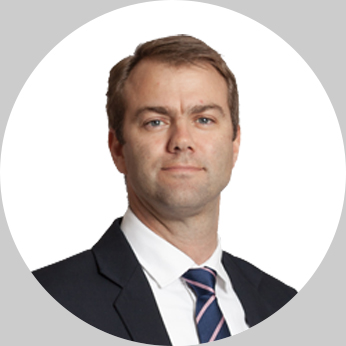Market Overview: April 2018
Global equity markets remained volatile in April, as investors continued to be concerned about the prospects of a US-Europe-China trade war following tit-for-tat tariff proposals announced. A rising oil price also renewed worries over accelerating inflation and therefore higher interest rates, which pushed US bond yields higher. In particular, investors were keeping a close eye on the 10-year US Treasury bond, where the yield managed to just reach the key 3.0% level (from 2.8% at the start of the month) – a level where historically, bond yields have started to become more attractive versus equities, making it more difficult for investors to decide between investing in bonds versus equities. This consequently added to equity market volatility. Rising yields also supported the US dollar, which gained ground against most currencies over the month. At the same time, however, company earnings reports remained strong, as did US economic indicators. March CPI was announced at 2.4% y/y, still under control but reinforcing the US Federal Reserve’s forecasts of at least two more 25bp interest rate hikes in 2018. Globally, fundamentals remained positive as China reported Q1 GDP growth at a faster-than-expected 6.8% (q/q) thanks to strong consumer demand and government infrastructure spending. Europe looked to be maintaining a steady growth path amid signs that Germany recorded a pause in its growth momentum, while the European Central Bank kept rates on hold and signaled its reluctance to tighten monetary policy at a faster pace. Euro-area March CPI came in at only 1.3% y/y from 1.1% in February. The UK continued in its slow-growth state, with only 0.4% q/q GDP growth in Q4 2017 – it is projected to post around the same rate in 2018 as Brexit uncertainty constrains investment.
Looking at global equity market returns (all in US$), the MSCI All Country World Index returned 1.0% in April. Emerging markets delivered -0.4% (MSCI Emerging Markets Index), while the MSCI World Index (for developed markets) returned 1.2%. Among developed markets, the S&P 500 produced 0.4%, the Nasdaq 0.4%, while the Dow Jones Industrial 30 delivered 0.3%. In Europe, the Dow Jones EuroStoxx 50 posted a 3.9% return, with France’s CAC producing 5.6% and Germany’s DAX 2.6%. The UK’s FTSE 100 gained 4.9% and Japan’s Nikkei returned 2.0%. Among larger emerging markets in US$, the strongest performer for the month was MSCI India (in positive territory with a 4.1% return), while South Korea’s Kospi was the next strongest with 2.0%. The weakest markets included the MSCI Turkey (10.6%) and the MSCI Russia (-7.4%). The Bloomberg Barclays Global Aggregate Bond Index (US$) returned -1.6%, while the EPRA/NAREIT Developed Global Property Index (US$) delivered 2.0%.
Commodity prices were mixed: in US dollar terms precious metals were down with Brent crude gained 7.0% to trade over US$75 per barrel (amid strong demand, OPEC supply cuts and prospects for more US sanctions on Iran. Gold lost 0.8% with platinum losing 2.9%.
In South Africa, a weaker rand and rising oil price in April combined to dim the brighter outlook for the economy to a certain extent. Although CPI inflation fell to a seven-year low at 3.8% y/y in March (lower than expected), the inflationary impact of oil and a depreciating currency lowered the chances of further interest rate cuts by the SA Reserve Bank in the coming months. The SARB also signaled its reluctance to cut rates further, emphasizing that it would aim to bring inflation expectations down to the 4.5% mid-point of its targeted 3-6% inflation band – rather than simply within the band.
Local bonds moved weaker on these factors, with the yield on the 10-year SA government bond rising from 8.0% to 8.2% at the end of April. The BEASSA All Bond Index delivered -0.7% for the month. However, business confidence posted a sharp improvement as the RMB/BER Index jumped 11 points to 45 in March, due to improved optimism over the political and economic direction of the country. President Ramaphosa, top cabinet members and business executives embarked on an effort to raise US$100billion in foreign direct investment, starting at the Commonwealth Summit in London, luring investors with proposed tax and general industrial incentives. Ramaphosa also tried to reassure investors that potential changes to the ANC’s land policy would not damage the economy. Inflation-linked bonds (Composite ILB Index) produced a strong 4.4%, andcash as measured by the STeFI Composite Index returned 0.6%. With a stronger US dollar in April, the rand depreciated 5.4% against the greenback, 3.5% against the UK pound sterling and 3.6% versus the euro.
SA equities showed a healthy turnaround following last month’s largely negative performance with the FTSE/JSE All Share Index posting a 5.4% return in April. Resources gained 8.5%, financials were up 3.2% and industrials gained 5.2%. After a shocking start to the year, listed property shares returned a welcome 7.7% for the month.
According to Morningstar data, the average ASISA SA general equity fund returned 3.6% for the month. The average multi-asset high equity (balanced) fund delivered 3.5%, while multi-asset low equity funds averaged 2.2%, and multi-asset income funds returned 0.7% on average.
To find out more about Prudential funds contact our Client Services Team on 0860 105 775 or at query@prudential.co.za.
Share
Did you enjoy this article?
 South Africa
South Africa Namibia
Namibia




 Get the Newsletter
Get the Newsletter